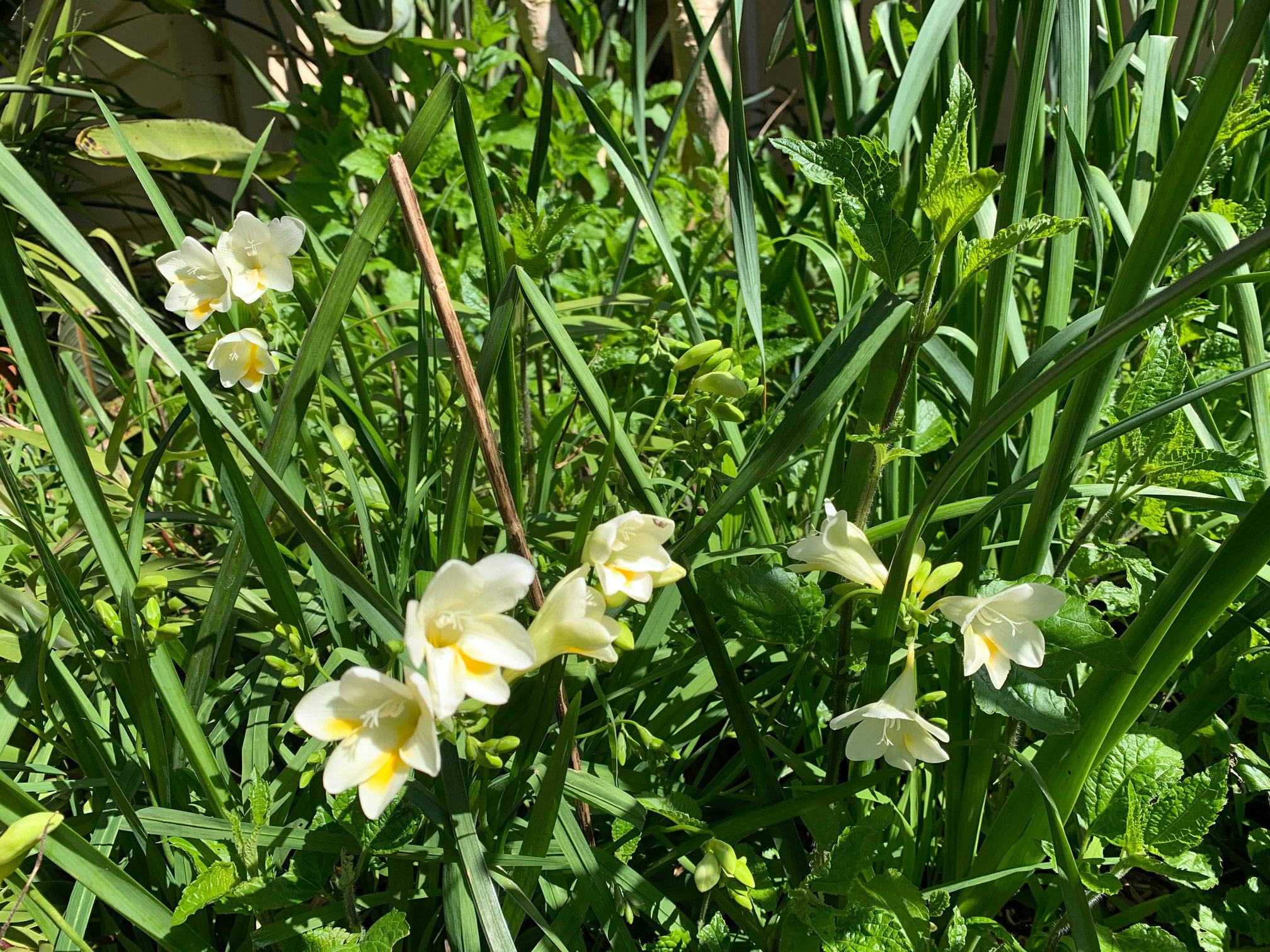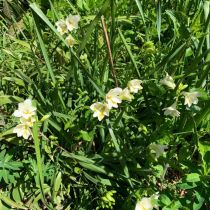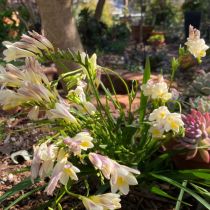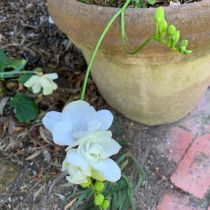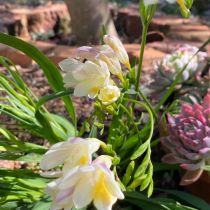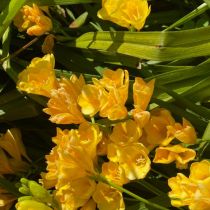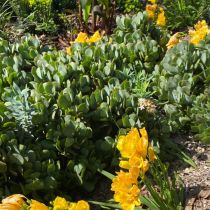Plant of the Week
Freesias
Each week, OGV sub-committee member, Gayle Parkes presents the 'Plant of the Week'. She also posts to OGV's Instagram - make sure you check back weekly for her latest post. This week Gayle brings us the freesia: its intoxicating scent signalling the beginning of spring.
Freesia is a genus of herbaceous perennial flowering plants in the family Iridaceae, first described as a genus in 1866 by Christian Friedrich Ecklon and named after the German botanist and medical practitioner, Friedrich Freese.
It’s spring and spring means bulb time! There is such a plethora of beautiful bulbs bursting forth for us at present, from the cheerful happy faces of the huge range of daffodils available today, to beautiful blue chubby hyacinths, sweet crocus, iris, ranunculus, spiraxis and tulips, just to name a few.
But it’s the alluring floral fragrance of freesias that signals the start of spring for me. Whether you are a fan of the brightly coloured modern hybrids or prefer the subtleties of the pale creams and white varieties, there is a freesia to satisfy all tastes, making them hard to resist.
These blooms are a spring must have, the flowers are profuse, easy to grow and will perform for weeks on end. Their trumpet-shaped flowers come in a variety of vivacious colours, including red, yellow, pink, purple, cream and white. Freesias look their best planted in groups or masses rather than in rows. Masses of a single color make a striking display. They are great bulbs for naturalising as they are well suited to Australian conditions.
Plant your bulbs/corms in late summer or early autumn in large clumps, approximately 5cm deep and 5cm apart. The bulbs look like small, slim onions and need to be placed with the pointy end facing up. Take some time making sure you get this part right!
They favour a sunny spot but are also happy in a position with a little shade. One dislike is boggy, poorly drained ground (a common complaint for most bulbs). They also lend themselves really well to growing in containers. With their beautiful perfume and vibrant colours you could have pots of them scattered all about your garden, around rockeries, under trees, on your balcony or at your doorstep, with that heady fragrance wafting through your garden and open windows each spring.
Freesias bloom 10 to 12 weeks after you plant the corms. You can extend the flowering season by planting the bulbs at weekly intervals which I think is a great idea. After the flowers and foliage die, if you wish you can lift the corms from the soil and store them in a cool dry place ready for the next season. Freesias however can also be left in the ground where they will happily multiply, giving you even more joy the following season. A real plant and forget treasure!
Freesias are prized for their cut flowers, thanks to their long vase-life. What a bonus! Some freesia blooms can last up to three weeks if you cut them as a bud. With up to eight trumpet-shaped, upward-pointing blossoms on leafless stems, and with so many colour combinations to choose from, freesias will make a delightful addition to your floral arrangements.
I just adore all freesias but I must admit, it is Freesia refracta, commonly known as ‘Grandma’s Freesia’, the traditional garden variety, that is my favourite. This is the one that is often found in very old gardens, in neglected gardens and around long forgotten graves in cemeteries. This is the one you will see and smell flowering along the roadside or the edge of bushland. The intoxicating perfume of this old fashioned beauty has stood the test of time. Its lingering fragrance is surpassed by none.
This is the one I will be ordering more of in February from one of the many online bulb suppliers who must be doing it pretty tough at the moment. The highly perfumed Freesia refracta, with its mix of creamy white, mauve and pale yellow, will add that extra dimension of divine fragrance to my little garden, in pots, in nooks and crannies between my pots and also indoors, in a gorgeous vase. Guess I’m a fan of the pale, creamy tones….. Which ones hit the spot for you?

